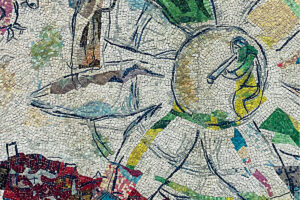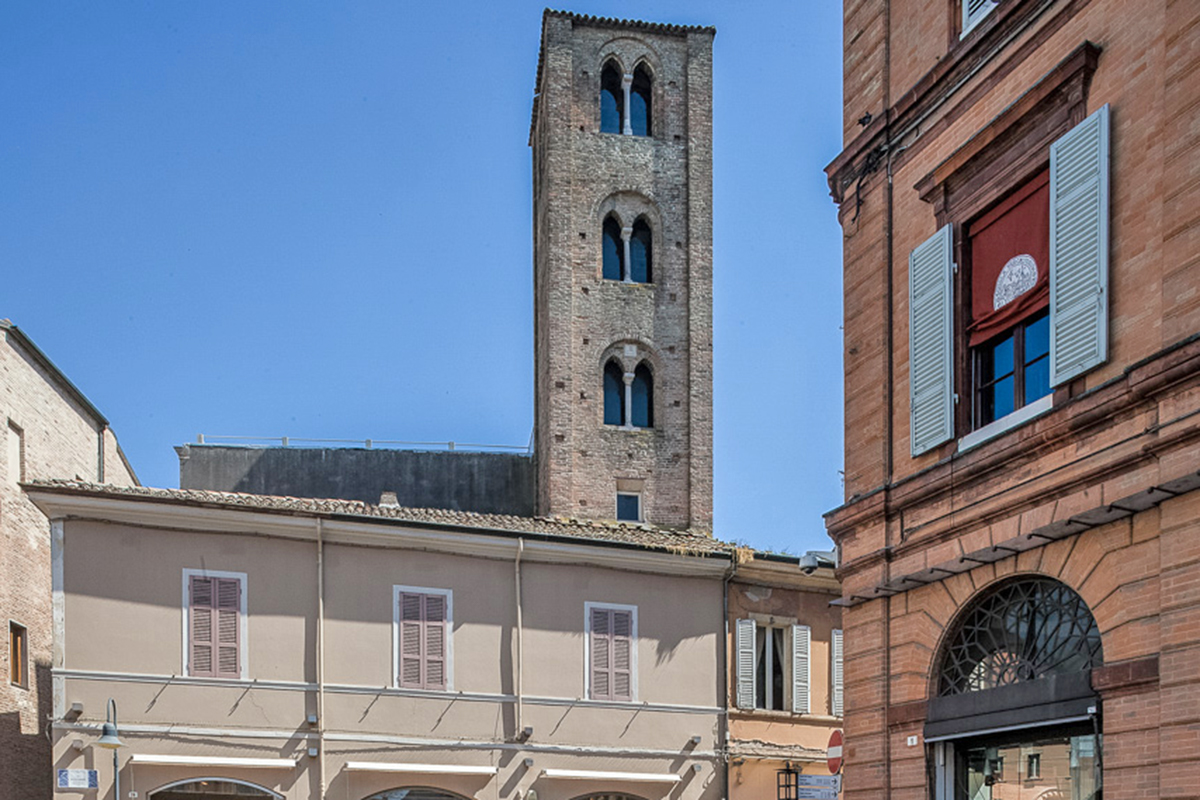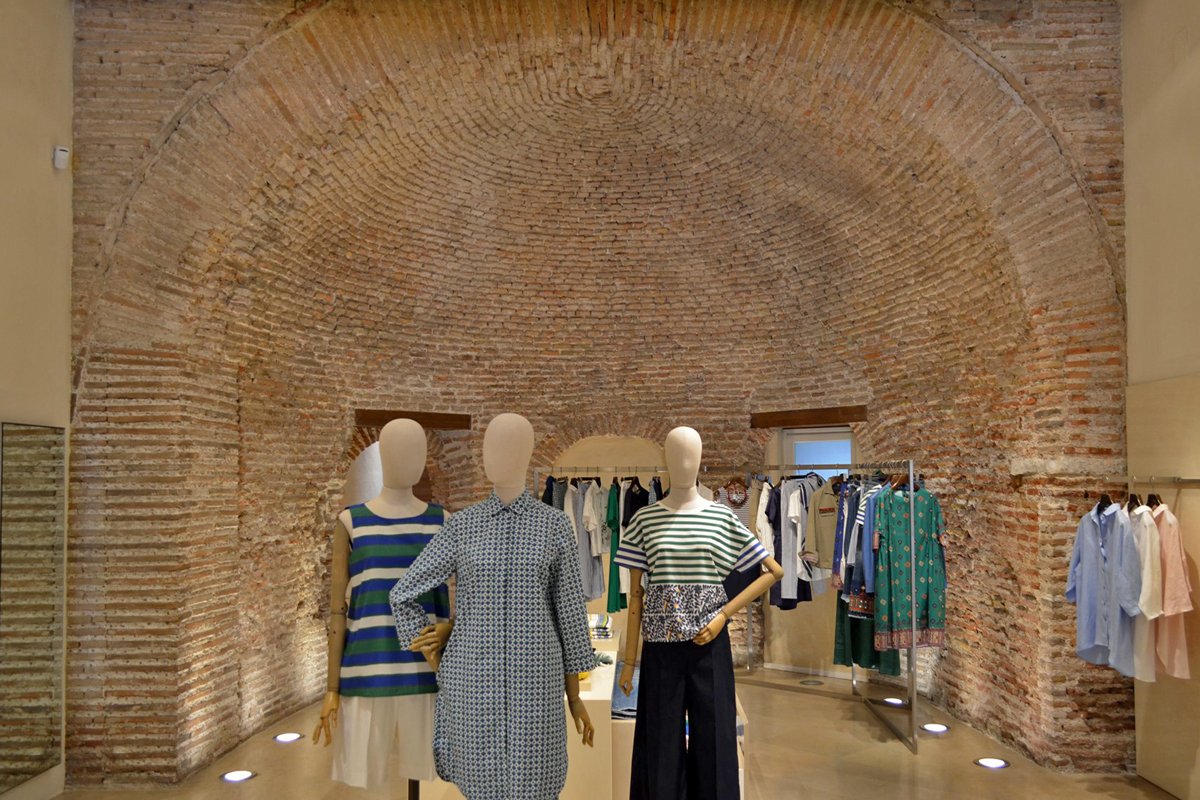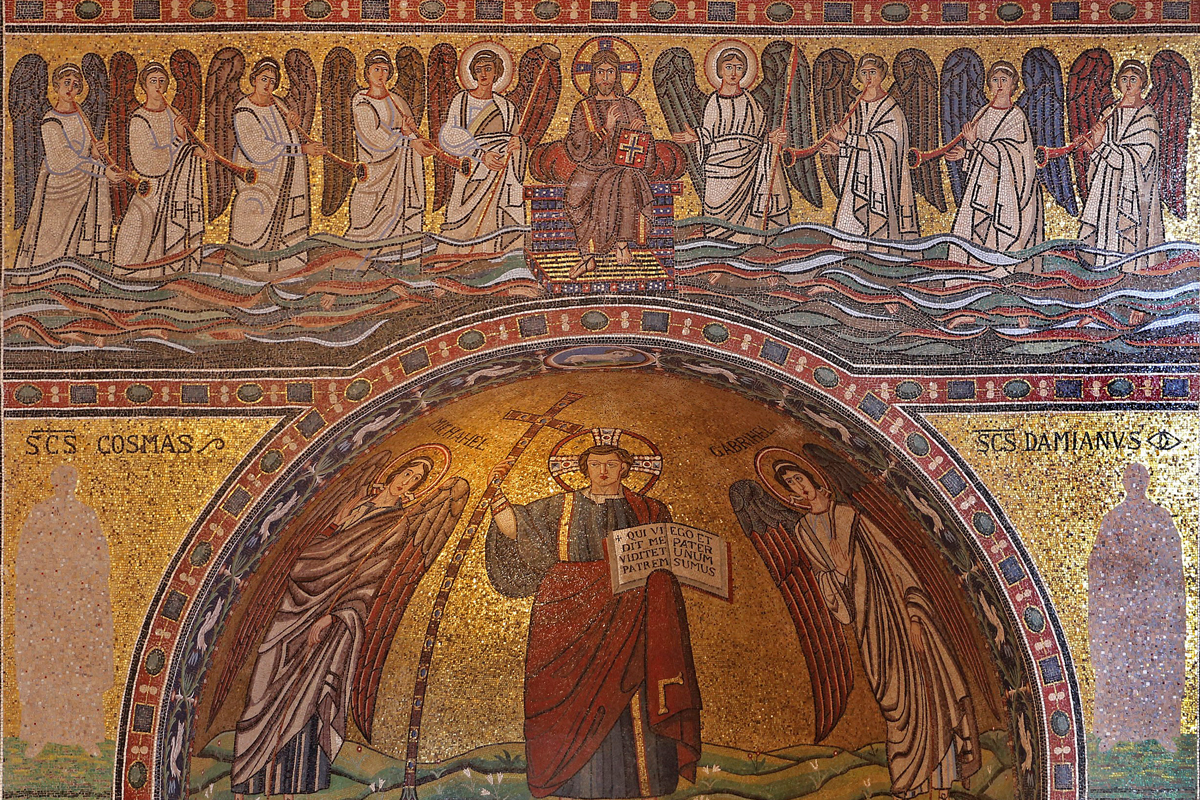Almost hidden from sight, a bell tower decorated with Gothic double-arched window apparently lacking a church at its base stands out among the roofs of Ravenna’s historical centre in Via IV Novembre.
The former CHURCH OF SAN MICHELE IN AFRICISCO today hosts a shop, where the polygonal apse and the 15th-century cross vaulted chapel are still partly visible.
History of a “gone” basilica
Among the treasure of Byzantine architecture in Ravenna, this small building is the only one that has undergone a diaspora.
Dating back to the 6th century AD, its construction was financed by banker Julius Argentarius (who had also financially contributed to the construction of the Basilica of San Vitale and the Basilica of Sant’Apollinare in Classe) and a relative of his, Bacauda, as a votive offering to Archangel Michael.
Consecrated in 547 AD by Bishop Maximian, the church of San Michele in Africisco owes its name to the area of the city in which it rose during the 10th-11th century, called ad Frigiselo.
The three-nave building, originally divided by columns, was probably decorated with marvellous mosaics, including the outstanding one of the apse, then purchased by Frederick Willian IV of Prussia and kept in the Bode Museum in Berlin.
The building underwent a long series of restorations over time; for instance, the façade and the square bell tower were added at the turn of the 14th and 15th centuries.
Other remains witnessing the high-quality materials used for the construction of this church are kept in the Ravenna National Museum: a fragment of a mosaic depicting flowers, two repurposed capitals (spolia) and a very elaborate transenna.
The church was continuously renovated over the years, and a still visible bell tower was added in the 14th century.
After the Napoleonic looting of art, in 1805 the church – already in poor condition – was definitively deconsecrated and sold for 80 scudi to Andrea Cicognani, who turned the left aisle into fish shops for the nearby market.
The church was finally deprived of its precious treasures, starting from the apse mosaic.










